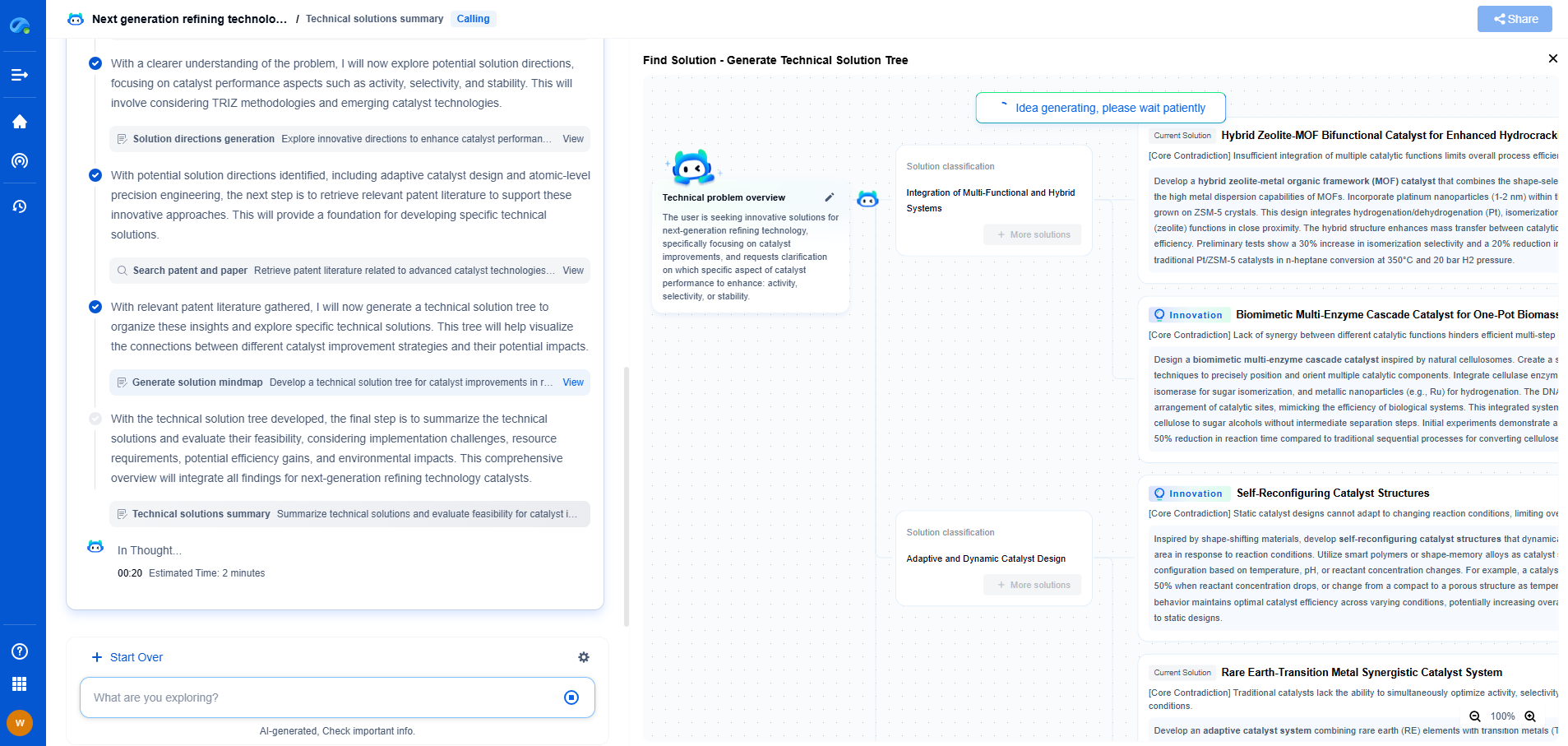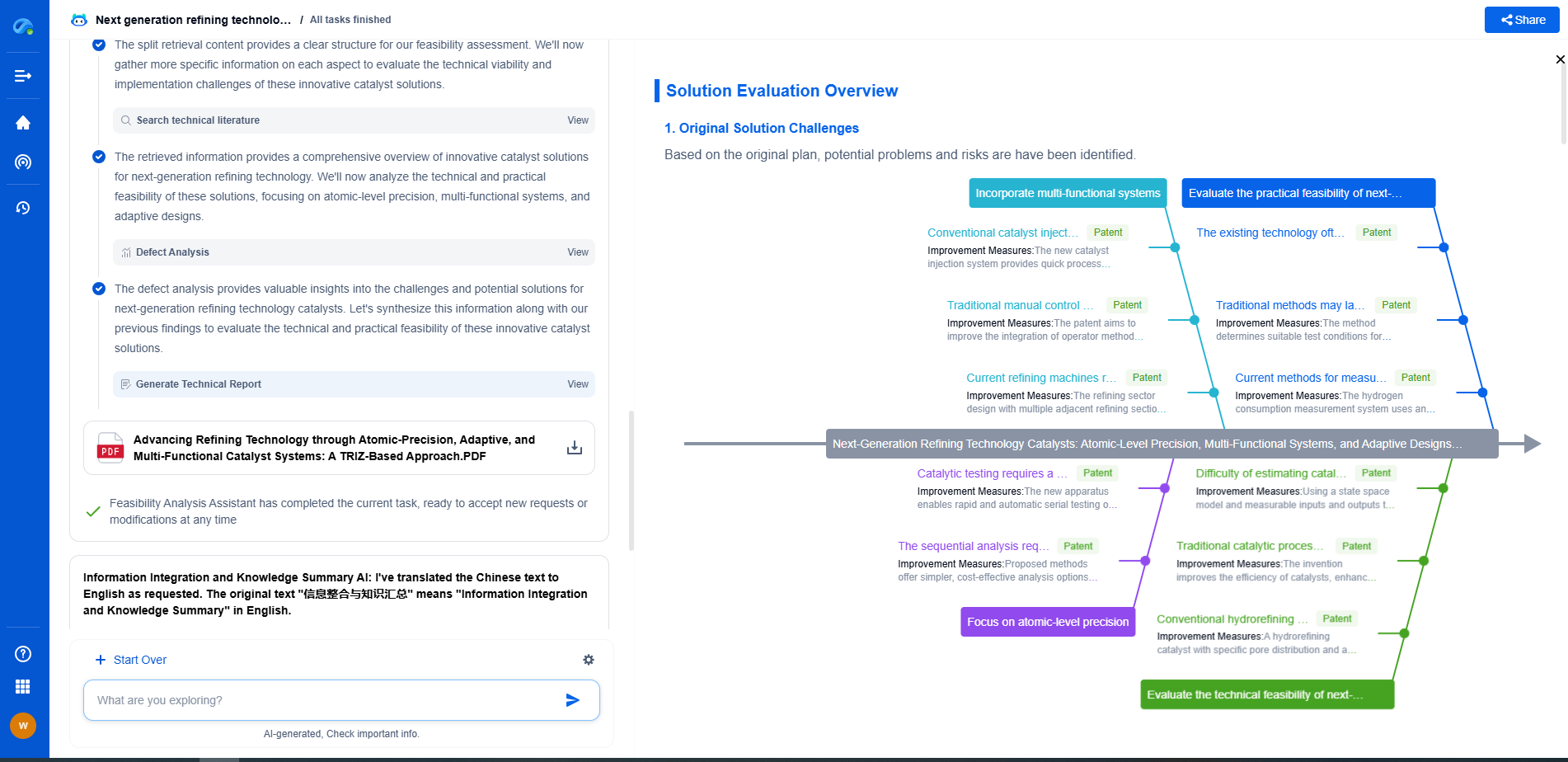Edge AI for Real-Time Time-Frequency Feature Extraction in IoT Vibration Sensors
JUL 16, 2025 |
The Internet of Things (IoT) has revolutionized the way we interact with devices and collect data in real-time. One of the significant advancements in this domain is the integration of Edge AI for real-time processing, especially in vibration analysis. Vibration sensors are crucial in various industries, including manufacturing, automotive, and construction, for monitoring equipment health and predicting failures. By employing Edge AI, these sensors can extract time-frequency features instantaneously, providing actionable insights for maintenance and operational efficiency.
Understanding Edge AI
Edge AI refers to the deployment of artificial intelligence algorithms locally on devices rather than relying solely on cloud-based systems. This approach brings computation closer to the data source, reducing latency and bandwidth usage. In the context of IoT vibration sensors, Edge AI enables immediate processing of data, facilitating the extraction of critical features related to vibrations, such as frequency, amplitude, and waveform patterns.
Importance of Time-Frequency Feature Extraction
Time-frequency analysis is essential for understanding the dynamic behavior of mechanical systems. It provides insights into how the frequency content of a signal evolves over time, crucial for detecting anomalies and predicting machine failures. Traditional methods of feature extraction often rely on transmitting raw data to centralized systems, which can be slow and bandwidth-intensive. Edge AI overcomes these challenges by processing data locally, thus enabling faster decision-making.
Benefits of Edge AI in Vibration Analysis
1. **Real-Time Processing**: Edge AI facilitates instantaneous data processing, allowing for real-time monitoring and analysis. This capability is vital for identifying and addressing issues as they arise, minimizing downtime and maintenance costs.
2. **Reduced Latency**: By processing data at the edge, latency is significantly reduced. This is particularly important for applications where time is of the essence, such as in predictive maintenance and safety-critical systems.
3. **Improved Data Privacy**: Processing data locally ensures that sensitive information does not need to be transmitted over networks, enhancing privacy and security.
4. **Bandwidth Efficiency**: Edge AI reduces the need to transmit large volumes of data to the cloud. Instead, only relevant insights or anomalies are sent, conserving bandwidth and reducing cloud storage costs.
Applications of Edge AI in IoT Vibration Sensors
Edge AI's capabilities have far-reaching applications in various industries. In manufacturing, for example, IoT vibration sensors equipped with Edge AI can monitor machinery in real-time, predicting failures before they occur and optimizing maintenance schedules. In the automotive industry, these sensors can be used to monitor vehicle dynamics and component wear, enhancing safety and performance.
Challenges and Future Directions
Despite the benefits, implementing Edge AI in IoT vibration sensors does come with challenges. One key issue is the limited computational power and energy resources of edge devices. Developing efficient algorithms that can operate within these constraints is essential. Additionally, there is a need for standardization in the deployment and integration of Edge AI solutions across different platforms and industries.
The future of Edge AI in vibration analysis is promising. As technology advances, edge devices will become more powerful, enabling more complex analyses and broader applications. Continued research and development will focus on enhancing the efficiency of AI algorithms and improving the interoperability of IoT systems.
Conclusion
Edge AI represents a transformative approach to feature extraction in IoT vibration sensors, offering real-time insights, reduced latency, and improved privacy. By processing data locally, organizations can achieve more efficient and effective monitoring and predictive maintenance. As the IoT landscape continues to evolve, the integration of Edge AI will play a pivotal role in harnessing the full potential of vibration analysis and ensuring the reliability and safety of critical systems across industries.
In the world of vibration damping, structural health monitoring, and acoustic noise suppression, staying ahead requires more than intuition—it demands constant awareness of material innovations, sensor architectures, and IP trends across mechanical, automotive, aerospace, and building acoustics.
Patsnap Eureka, our intelligent AI assistant built for R&D professionals in high-tech sectors, empowers you with real-time expert-level analysis, technology roadmap exploration, and strategic mapping of core patents—all within a seamless, user-friendly interface.
⚙️ Bring Eureka into your vibration intelligence workflow—and reduce guesswork in your R&D pipeline. Start your free experience today.
- R&D
- Intellectual Property
- Life Sciences
- Materials
- Tech Scout
- Unparalleled Data Quality
- Higher Quality Content
- 60% Fewer Hallucinations
Browse by: Latest US Patents, China's latest patents, Technical Efficacy Thesaurus, Application Domain, Technology Topic, Popular Technical Reports.
© 2025 PatSnap. All rights reserved.Legal|Privacy policy|Modern Slavery Act Transparency Statement|Sitemap|About US| Contact US: help@patsnap.com

